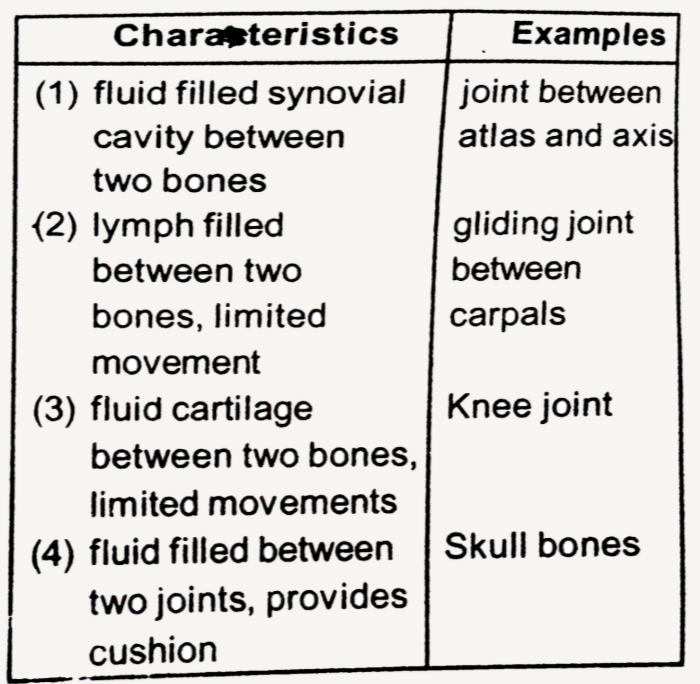Explain a synovial joint.
Step-by-Step Text Solution:
1. Definition of Synovial Joint: A synovial joint is a type of joint that allows for movement between two or more bones. These joints are characterized by their ability to facilitate a wide range of motion.
2. Location: Synovial joints are commonly found in the limbs of the body. Examples include the shoulder joint, hip joint, and elbow joint. These joints are crucial for various physical activities and movements.
3. Synovial Membrane: One of the key features of synovial joints is the presence of a synovial membrane. This membrane is a specialized layer of cells that lines the joint capsule, which encases the joint.
4. Synovial Fluid Production: The synovial membrane produces synovial fluid, a viscous fluid that fills the joint cavity. This fluid plays an essential role in joint function.
5. Function of Synovial Fluid: The primary function of synovial fluid is to lubricate the joint, allowing the bones to slide smoothly past each other during movement. It also facilitates rotational movements, enabling a greater range of motion.
6. Conclusion: In summary, synovial joints are crucial for enabling movement between bones, characterized by the presence of a synovial membrane and synovial fluid, which together ensure smooth and efficient joint function.
Topper's Solved these Questions
- LOCOMOTIONA ND MOVEMENT BOOK - ICSECHAPTER - LOCOMOTIONA ND MOVEMENT EXERCISE - TEST YOUR PROGRESS ( SHORT/LONG ANSWER TYPE QUESTIONS )
31 Videos
- LOCOMOTIONA ND MOVEMENT BOOK - ICSECHAPTER - LOCOMOTIONA ND MOVEMENT EXERCISE - TEST YOUR PROGRESS ( HIGHER ORDER THINKING SKILLS QUESTIONS (HOTS))
9 Videos
- LOCOMOTIONA ND MOVEMENT BOOK - ICSECHAPTER - LOCOMOTIONA ND MOVEMENT EXERCISE - TEST YOUR PROGRESS ( OBJECTIVE TYPE QUESTIONS ) (State whether the following statements are true or false .)
17 Videos
- LOCOMOTION AND MOVEMENTBOOK - ICSECHAPTER - LOCOMOTION AND MOVEMENTEXERCISE - LONG ANSWER TYPE QUESTIONS
14 Videos
- MINERAL NUTRITION BOOK - ICSECHAPTER - MINERAL NUTRITION EXERCISE - NCERT EXERCISE WITH ANSWER (DIFFERNTIATE BETWEEN )
9 Videos
Similar Questions
_____acts as a lubricant in a synovial joint.
View SolutionFixed joint and synovial joint
View SolutionWhich one of the following is not a synovial joint
View SolutionGive an example for each of the following:
A synovial joint
View SolutionAssertion:− Arthritis is the inflammation of synovial joints.
Reason:− Synovial joints are mobile type of joints.
View SolutionThe characteristics and an example of a synovial joint in humans is :

View SolutionWhich of the following is not the example of synovial joint?
View SolutionThe characteristics and an example of a synovial joint in humans is

View SolutionDraw a labelled diagram of a synovial joint. Give one example each for a hinge joint, a pivot joint, axial skeleton and appendicular skeleton.
View SolutionExplain: Fibrous joints and Synovial joints
View Solution
